Content
Today, few housewives can properly wet apples; this method of preparing food for the winter has lost its popularity. And it’s completely in vain, because soaking is a great way to preserve all the nutrients and vitamins in the fruit, making apples a tasty and unusual dish. You can eat soaked preparations as an independent dish, you can serve the fruits for dessert, season them with honey, or use them to prepare salads or snacks. If the technology is followed, soaked apples can be stored until the middle of next summer, all this time remaining just as tasty and aromatic.
This article will be devoted to how to prepare soaked apples and which variety is best to choose for this.
Secrets of proper urination
Previously, every housewife knew how to wet apples and other products, because this was one of the few ways available then to preserve food for the winter. In almost every basement there were wooden barrels with pickled apples and cabbage; they were covered with wooden mugs and exuded a sour and spicy aroma.
Today, most of the recipes for urination have been lost, but the technology of this process has been preserved. To ensure that the apples not only turn out tasty, but also be stored for a long time, you need to follow some rules:
- For urination choose only firm apple varieties: winter or late autumn. Most often, Antonovka is used for these purposes, because this variety is widespread in gardens and markets across the country. Varieties of apples such as anise, pepin, autumn striped, titovka, and golden are also suitable. All apples must be whole, without damage or wormholes, and especially without traces of rot or mold.
- Urine utensils must be sterileso that putrefactive bacteria or mold fungi do not appear in the apples. Before use, containers are steamed or filled with boiling water to kill any bacteria.
- Previously, apples were soaked only in wooden tubs; in the modern world, finding such containers will be problematic. That's why tubs can be replaced with ceramic barrels, glass jars or enamel buckets, pans.
- Soaked apples are also good as a separate dish, but you should definitely try adding them to salads or using them as a side dish for any fatty meat (lamb, Christmas goose or pork).
- Nutritionists recommend eating soaked apples for those who want to lose weight or improve the functioning of the digestive system. They are often eaten during Lent. But Children under five years old should not eat soaked foods - this should be remembered.
- If you have to buy apples for soaking, it is better to do this at the local market or at a dacha cooperative. Store-bought fruits are treated with chemicals to extend their lifespan. During the soaking process, such apples can behave unpredictably, and the chemicals in the brine are unlikely to be useful.
- Before cooking apples It is recommended to wait a couple of weeks in a cold barn or on a balcony, laying them out in rows so that the fruits do not touch.Leaves of trees and shrubs that are planned to be added to the brine need to be soaked in cold water for a couple of hours.
- While the apples are in the basement, you will have to add liquid to them at first, since the fruits will absorb it intensively. Therefore, you should always have a portion of brine or cold boiled water ready.
- On average, ten liters of brine is enough for 2-2.5 buckets of fruit - this must be taken into account in your calculations.
Soaked Antonovka apples with white cabbage
For cooking you will need the following products:
- Antonovka – 1 kg;
- cabbage - an average head of 1.5-2 kg;
- carrots – 0.3 kg;
- 2 tablespoons of salt;
- spoon with a heap of sugar.
Antonovka and cabbage are soaked in several stages:
- First, shred the cabbage, cutting it into not too small, but also medium-sized pieces (like borscht).
- Then grate the carrots on a coarse grater and mix it with cabbage. Add salt and sugar, knead the whole mass thoroughly with your hands to release the juice.
- Now you need to taste the mixture and add salt or sugar if necessary.
- Place a layer of cabbage and carrots on the bottom of the prepared container and lightly tamp it down.
- Apples are placed on top in one layer, the gaps between the Antonovka fruits are covered with cabbage.
- This way you can alternate layers until the soaking container is full. There should be cabbage on top, completely covered with juice.
- If the juice is not enough, add cold boiled water with dissolved salt and sugar.
- The apples are pressed on top, wrapped in a towel and taken to a warm room with a stable temperature (the kitchen is perfect). Here the antonovka in the cabbage should remain for about two weeks, after which the dishes with soaked products can be taken to the basement or put in the refrigerator.
- The apples will be ready only after 2-3 weeks, that’s when the urination process will be completed.
In this form, the soaked snack is left until the next apple season, or until it is eaten.
Recipe for soaked Antonovka or other apples with the addition of herbs
These apples are best eaten cold; they turn out very crispy and flavorful.
For preparation you will need:
- water – 10 l;
- honey – 0.5 kg;
- salt – 180 g;
- rye flour – 150 g;
- a bunch of mint and basil;
- several dozen currant leaves.
Prepare apples like this:
- The water needs to be brought to a boil and cooled slightly. Dissolve honey, salt and rye flour in warm water, then cool the brine completely.
- Place a thin layer of blackcurrant leaves on the bottom of a glass, enamel or ceramic dish.
- Place apples on top, placing them tightly in one row. Cover the apples with currant leaves, and tamp sprigs of mint and basil between the fruits.
- The last layer of Antonovka is covered with leaves and a wooden circle or plate is placed on them, which is pressed with a press.
- Now it’s time for the brine - pour it in carefully, making sure that the liquid completely covers the fruit.
- Place the soaking container in a cool room with a constant temperature of 14-17 degrees.Here the Antonovka should stand for 28-42 days. After which the products are lowered into the basement or put in the refrigerator.
Soaked Antonovka with rowan
These apples have a particularly piquant taste and delicate berry aroma. It is recommended to cut them into slices and sprinkle with green onions; you can also season them with fragrant vegetable oil.
For preparation you will need the following ingredients:
- water – 10 l;
- apples (Antonovka or other winter varieties) – several kilograms;
- rowan – 3 kg;
- 0.5 kg sugar;
- 150 g salt.
Preparing soaked apples according to this recipe is not difficult: Salt and sugar are dissolved in cold boiled water, the apples are placed in a saucepan or tub, interspersed with rowan berries. Set up a press and pour in brine. Keep the tub in a cool and dark place for 2-3 weeks, adding boiled cold water regularly.
Sour soaked apples
This preparation is used as an additive to winter salads: sauerkraut, Korean carrots and other vegetables. Apples add a special sourness to the dish, but you only need a small amount of them. Therefore, you need to prepare a limited portion of sour soaked apples.
The products you will need are the simplest:
- water – 10 l;
- sugar and salt - 150 g each;
- cherry leaves - 4 large handfuls.
The preparation is the same as usual: boil water, cool slightly and dissolve sugar and salt in it, after which you need to completely cool the brine to room temperature. The washed apples are placed in a barrel or pan, layered with cherry leaves. After this, the Antonovka is filled with brine and a load is placed.
The soaked apples should sit in the basement for about 2-3 weeks; after this period, you can start trying the savory snack.
You can surprise guests with soaked apples, because this product is not popular in modern cuisine. With this preparation, you don’t have to worry about vitamins in the winter - there are enough of them in soaked Antonovka. In addition, savory apples add variety to the table, add flavor to salads and can serve as an excellent side dish.
All a good housewife needs to do is buy suitable apples and decide on a recipe!

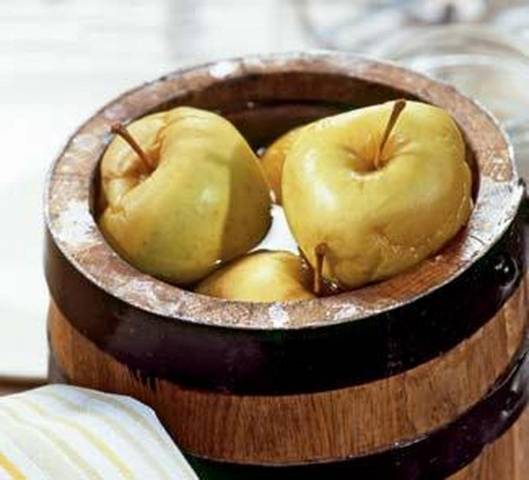
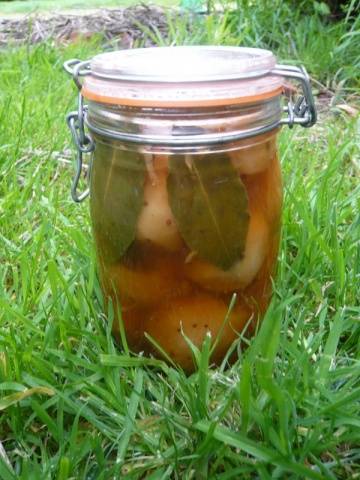
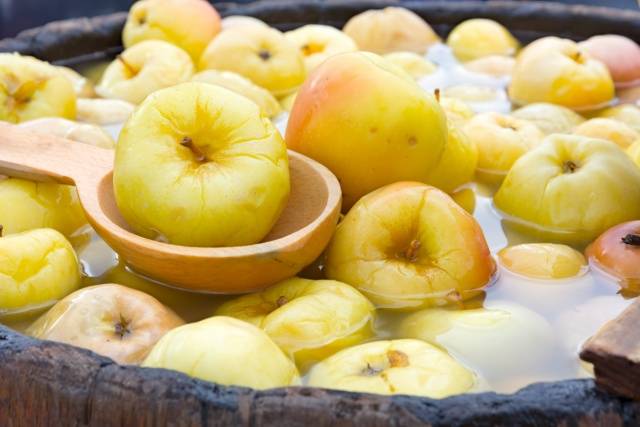
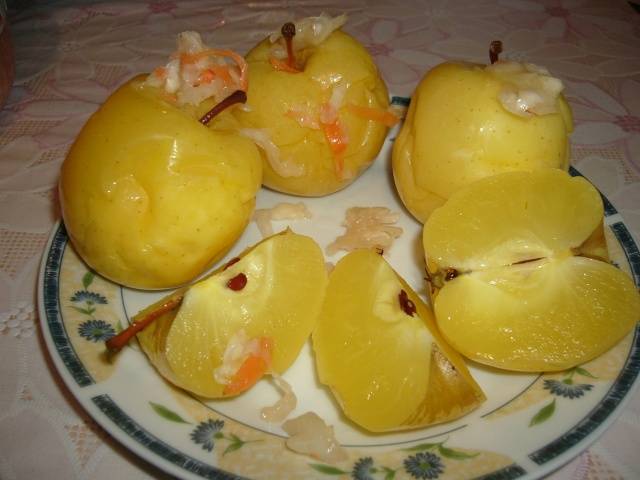
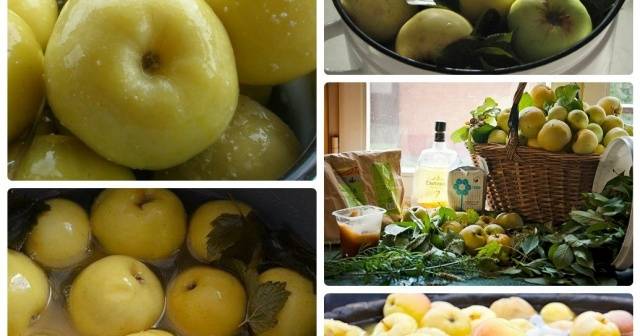
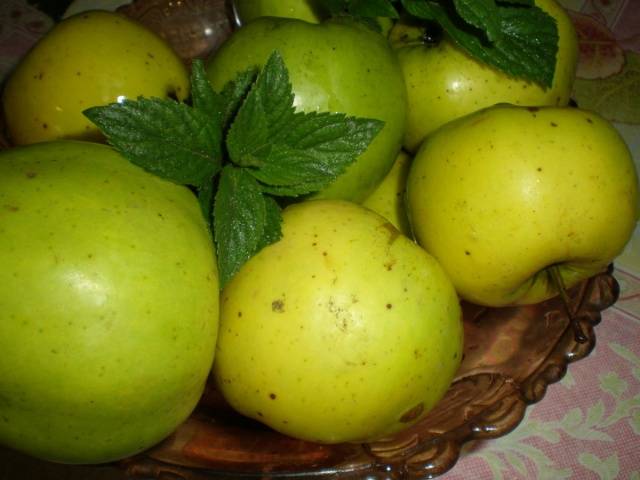
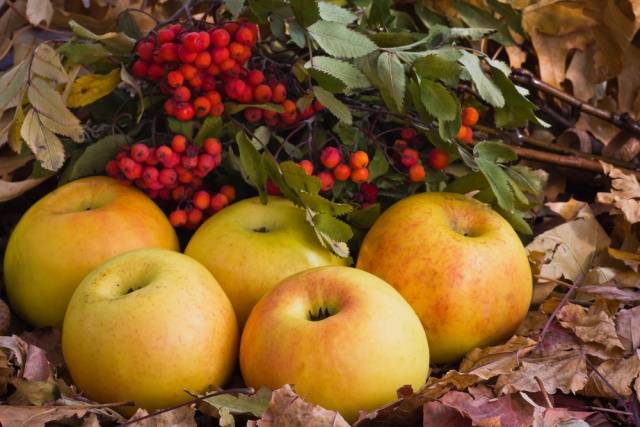
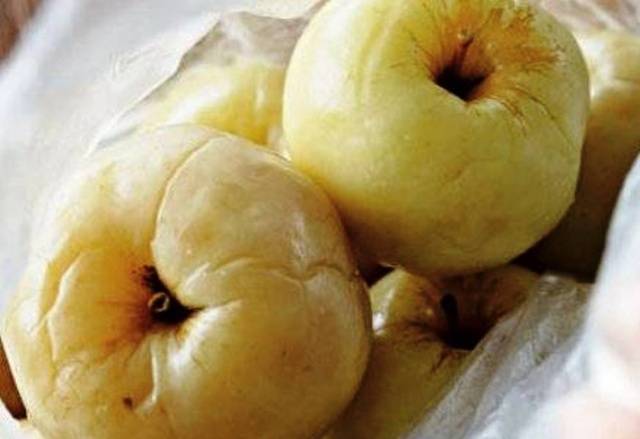
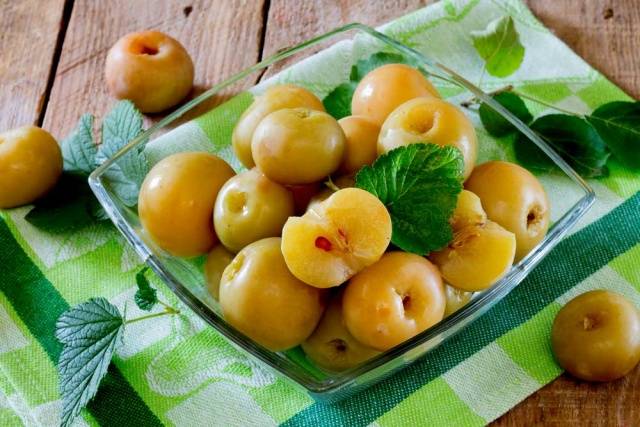
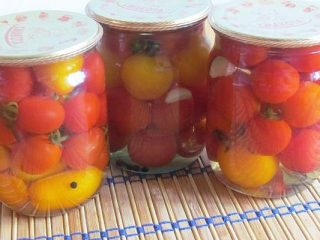
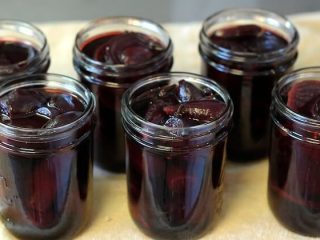

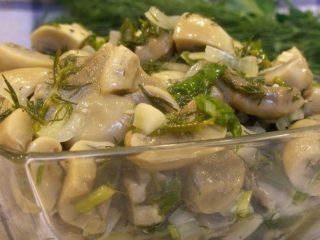
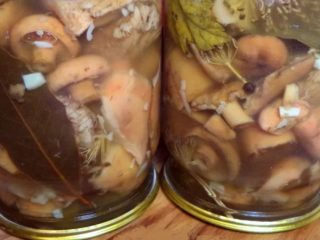
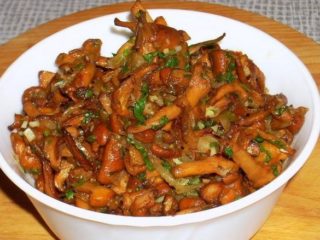
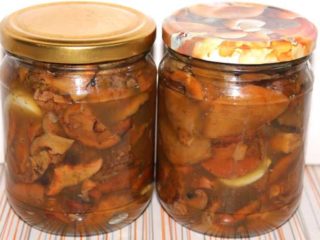
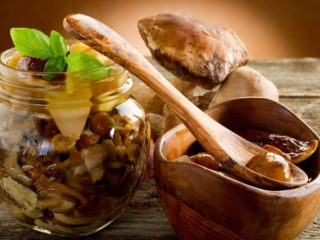

Good afternoon, Nikolay! The composition and purpose of currant and grape leaves vary greatly. And although the benefits of both are undeniable, currant leaves are placed in marinades to give them a specific aroma. Moreover, thanks to the currant leaf, cucumbers and apples retain their original density without softening during the fermentation process. After all, crunchiness is the main indicator of proper salting of the product. Currant leaves have bactericidal properties.
Grapes cannot boast of such a property. The grape leaf has a large number of useful and nutritious substances. It is often used in cooking and can often be found in traditional medicine recipes.The leaves are subjected to heat treatment (for preparing second courses), pickled or frozen. But it is not used as a component for fermentation and pickling. It will not give apples such a refined aroma and firmness as currants.
There is one thing... it’s unlikely that there would be such a huge number of different recipes now if it weren’t for people’s love of experimenting and searching for new flavors. Thanks to such bold innovations, new dishes appear. Try it, maybe you will become the author of a new recipe for delicious, pickled apples.
Good afternoon. Can I use grape leaf instead of currant leaf?